Maintaining the performance and longevity of reverse osmosis (RO) membranes requires proper cleaning practices. However, common mistakes during the cleaning RO Membranes process can lead to irreversible damage. At Besta Membrane, we emphasize the importance of correct cleaning procedures to ensure optimal membrane function.
🚫 Common Mistakes in Cleaning RO Membranes
1. Incorrect Cleaning Sequence
Initiating cleaning RO Membranes with an alkaline solution in the presence of scaling can exacerbate membrane fouling. Alkaline cleaners may cause organic and biological foulants to compact, making them harder to remove. It’s essential to start with an acid cleaning to dissolve inorganic scales like calcium carbonate before proceeding with alkaline cleaning for organic matter.
2. Neglecting Biofouling
3. Overuse of Cleaning Chemicals
Using excessively high concentrations of cleaning agents does not enhance cleaning efficacy and can damage membrane elements. Adhering to recommended chemical concentrations ensures effective cleaning while preserving membrane integrity.
✅ Best Practices for Cleaning RO Membranes
To optimize membrane cleaning and performance, consider the following guidelines:
Tailor Cleaning to Fouling Type
Different foulants require specific cleaning approaches:
| Fouling Type | Recommended Cleaning Agent | Concentration & Conditions |
|---|---|---|
| Inorganic Scales | Hydrochloric Acid (HCl) | 0.2% wt., pH 1–2, 25–40°C |
| Metal Oxides (e.g., Iron) | Sodium Hydrosulfite (Na₂S₂O₄) | 1.0% wt., pH 5, 25°C |
| Biofilms & Organics | Sodium Hydroxide (NaOH) with Surfactants | 0.1% NaOH + 0.025% Na-DSS, pH 12, ≤35°C |
Monitor Cleaning Parameters
Effective cleaning involves controlling various parameters:
| Parameter | Recommended Range |
|---|---|
| pH for Acid Cleaning | 1–2 |
| pH for Alkaline Cleaning | 11–12 |
| Temperature | ≤35°C (Alkaline), ≤45°C (Acidic) |
| Cleaning Duration | 30–60 minutes per cycle |
Avoid Delayed Cleaning
Postponing cleaning until severe fouling occurs can render cleaning ineffective. Regular monitoring and timely cleaning prevent foulant compaction and maintain membrane performance.
🔍 Importance of Proper Cleaning RO Membranes
Proper cleaning not only restores membrane performance but also extends its lifespan. For instance, cleaning at pH 12 has been shown to be significantly more effective in removing biofouling compared to pH 11.
| Cleaning pH | Biofouling Removal Efficiency |
|---|---|
| 11 | Moderate |
| 12 | High |
🏢 About Besta Membrane
At Besta Membrane, we specialize in providing high-quality RO membranes and expert guidance on maintenance practices. Our commitment is to help you achieve optimal system performance through proper cleaning protocols and support.
For personalized assistance or more information on membrane maintenance, feel free to contact Besta Membrane.

 MBR Membrane
MBR Membrane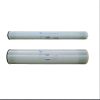 Reverse Osmosis Membrane
Reverse Osmosis Membrane Residential Ro Membrane
Residential Ro Membrane UF Membrane
UF Membrane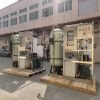 Water Treatment Plant
Water Treatment Plant Residential Ro Machine
Residential Ro Machine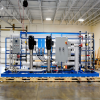 Brackish Ro System
Brackish Ro System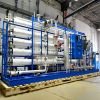 Sea water system/SW RO plant
Sea water system/SW RO plant Bag Filter
Bag Filter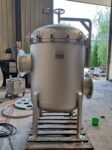 Cartridge Filter
Cartridge Filter Commercial Water Filtration System
Commercial Water Filtration System Membrane Cleaning System(CIP)
Membrane Cleaning System(CIP)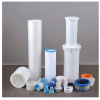 Consumables Accessories
Consumables Accessories
